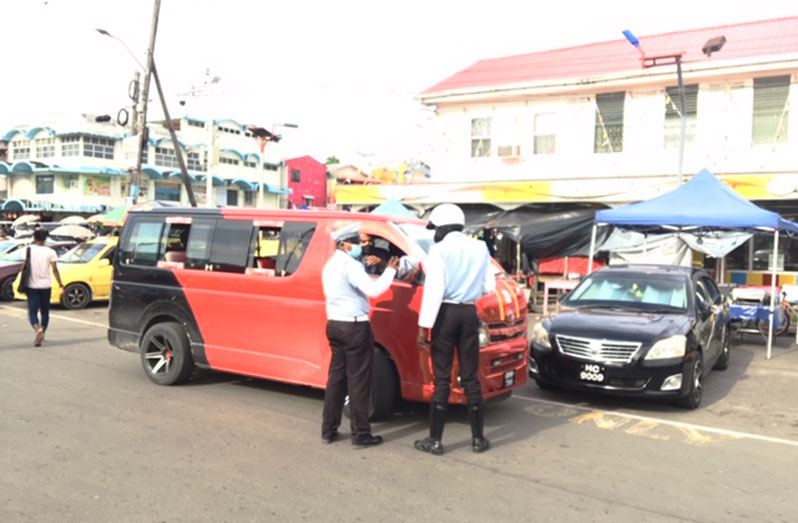By Francis Quamina Farrier
SOME years ago, with police officers milling around, I took video footage of the famous Scotland Yard Police Headquarters in London, England. It was used in a news item here in Guyana on VCT Channel 28, on my return to the country. I commence this article with that scenario because I am going to focus on the phobia of people who are so scared of public photography that it boggles the mind of rational persons. While it is true that there are those countries where the authorities do not only frown on public photography, but come down hard on anyone who takes photographs in public spaces, I am of the view that Guyana is not such a country.
Who says that taking photographs within the public domain is illegal? That it is something to get you into trouble? As someone who has taken photographs and video recordings in many countries around the world, including America, Australia, Britain, Brazil, Canada, Germany, Jamaica, Suriname, Trinidad, Venezuela, etc., I find it worrisome that here in Guyana, the country of my birth, it is not always easy. One can be detained by police officers who obviously do not know the law pertaining to that social and professional activity. For such law enforcers, a camera is regarded as an instrument of subversion, and that they are obliged to arrest or detain anyone using a camera in public. Such police officers need to understand that detaining or arresting someone for taking photographs in public is not a crime. I mention that because of a personal experience that ended in the High Court in Georgetown.

I had sued the Minister of Legal Affairs over the detention of my person by two uninformed Guyana Police ranks, while I was taking video footage of a repaired public school, which is located next to the Aurora Police Station on the Essequibo Coast, in Region Two. When they shouted to me to stop recording, I advised them to call headquarters in Georgetown for advice, since I was not committing any illegal activity. Instead, the two officers came and dragged me into the police station and detained me for a little less than 15 minutes. The incident was seen by someone who telephoned my editor-in-chief, who telephoned the police commissioner, who telephoned the divisional commander, who then telephoned the police station. I was then released. I sued, and the case went to the High Court with Justice Carl Singh on the bench and Counsel Nigel Hughes my lawyer. The matter was settled in less than 10 minutes with a decision that I receive damages of $30,000 for that illegal detention.
Over the decades, I have done video recordings and still photography on five continents – Africa, Australia, North and South America and Europe, and that incident on the Essequibo Coast was the only occasion when I was detained by law enforcers.
It is well-known that I relish telling some off-beat stories in my news gatherings. There was that occasion when I saw about two dozen police motorcycles parked in a long line on a street in Washington, DC, in the USA. I was fascinated and so commenced video recording them; after all, they were parked in the public domain with no sign stating that it is illegal to photograph them. Realising that they had registration plates from a variety of states, I meticulously ensured that I got their state identification in the footage. Then the sound of a strong male voice zoomed from behind me; “Like em, eh?” It was a burly six-foot-plus white police officer in uniform and with all accessories – a gun included. “My police officers in Guyana don’t have such powerful motorcycles,” I informed him. “Want to take a ride?” he asked. That was an offer which I couldn’t refuse, and so, giving the video camera to my colleague, and putting on the safety helmet which the officer had given me, I mounted the pillion seat of that United States police motorcycle and was given a ride around the block. The video footage was used as part of a TV news item which I did on the VCT Channel 28 Newscast, on my return to Guyana.
Over three decades later, I still tease members of the motorcycle division of the Guyana Police Force, telling them that even though my income tax help to provide the upkeep of their motorcycles, I have never had the pleasure of having a ride on any of them. While on a more recent visit to Ghana in West Africa, I got at least to sit on one of their large, impressive police motorcycles.
There is that grey area about taking photographs of buildings such as foreign embassies. While in a small foreign country, and going by the embassy of a very powerful country, I observed a number of signs which state, “NO PHOTOGRAPHY.” Then sometime later, a pre-teen went online and downloaded a bird’s eye view of the interior section of the compound of that embassy and showed it to me. Security and modern technology! This much I would admit, I would never take video or still photographs in a public space if I am alone and two gangs are shooting at each other, and they can see me.




.jpg)










